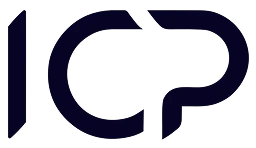Underestimation of costs - how to avoid it?
Exceedance of the planned investment costs, or underestimation of investment, is a frequent mistake in project cost estimation that entrepreneurs from various...

Tell our team about your needs and we will customize the tool as part of your chosen package!
Exceedance of the planned investment costs, or underestimation of investment, is a frequent mistake in project cost estimation that entrepreneurs from various industries struggle with. There is no golden mean, the panacea, which will allow us to perfectly estimate the project cost. However, several methods and actions can help or significantly limit differences between the planned and incurred expenses. Underestimated projects may lead to huge losses and even the collapse of the enterprise. How to save ourselves from such situations then?
Project cost estimation
For years, Bent Flyvbjerg, a Danish economist and Oxford University professor, has been dealing with the problem of investment cost underestimation. The first scientific publications tackling this matter began to appear at the beginning of the 1970s and regarded select undertakings. However, it was not always possible to analyze all the data, so Bent knew the problem existed but was unable to say on what scale. His studies focused primarily on building projects implemented worldwide. Why did they focus on such projects? He did so as the problem of underestimation occurs most frequently in the building industry, with investments in infrastructure and technological projects, including IT projects.
Many years of his studies show that:
- Investment implementation costs were exceeded in 9 out of 10 investigated investments, and the probability of exceeding planned costs was 86%.
- The average exceedance of planned costs was 28%.
- Interestingly, no significant differences were noticed in investment underestimation due to the period in which the projects were being performed. Undertakings implemented 10, 30, or 70 years ago showed similar data.
At statista.com you can find a comparison of some of the most well-known buildings in the world concerning the percentage of budget exceedance. Any business or organization will have to estimate its costs to function and succeed. This estimation of costs is difficult, as many different variables can affect the final cost of a project. In the business sector, many companies are adopting the teal model or parts of it.
Other interesting data can be found on the Mavenlink blog. They come from different reports and regard various industries, not only the construction one. 4 PM states that 70% of projects fail. On the other hand, hbr.org shows that because of unfinished, often underestimated projects, the American IT market loses 50 to 150 million dollars per year. According to IBM, only 40% of these types of undertakings fit within their budget, quality level, and implementation time. As you can see, statistics are rather cruel and show that project management and good project estimation are problems that are occurring on a larger scale and concern all enterprises, both small and large.
How to protect ourselves against underestimation?
Several schools of advice advise how to reduce the probability of cost underestimation and even how to prevent it in some cases. But before we even get to the implementation of the project, we have to prepare well for work. The planning stage is vital for the entire project. First and foremost, we have to determine what budget we have and adjust our actions to it. The situation gets worse when we are not entirely sure what our financial capabilities are and what resources or supplies we have. It is then more difficult, or sometimes even virtually impossible, to estimate the cost of the undertaking.
If we decide to calculate the project price, we have to follow three main indicators:
- time-how much time do we have to devote to creating a project or performing a service
- quality-how good a product we want to release
- price—how much we will earn after the product is sold
These three indicators have a peculiarity about them: usually, if two are met, the remaining one is not. In other words, we cannot produce something cheaply while also producing it well and quickly, or quickly while producing it well and cheaply. Therefore, at this stage, it is worth thinking about the proper protection of the budget to avoid problems at a later stage. However, what to do, however, when a project is already in implementation and we have to avoid cost exceedance?
First of all, we have to use an appropriate methodology for project management. Agile is said to be one of the most easily adaptable ways to control tasks. This is so as the flexibility of this methodology allows us to easily introduce changes during implementation. It could be said that it is a sequence-based way of managing tasks based on communication, people, cooperation, and response to change.
Another thing to do is to prepare small task teams and determine short working and reporting periods. Let it be one-week sprints. Each team has to perform its tasks within that time. Why can't short periods protect us against cost exceedance? First of all, these small samples reflect the entire process to some degree. If one of the links fails, we can have an additional team in reserve who will help our personnel. We also need to have a small crisis group on standby, one able to deliver several emergency solutions if a difficult situation arises. For such a group, it is worth preparing a few "test sprints" focusing on "putting out fires" in situations where our project will start to dramatically approach its financial threshold. This group will allow us to respond quickly because it will already have some alternative solutions prepared, one tested "at a laboratory site."
Communication among the people related to a project is also important. Poor flow of information and correspondence noise can lead to large delays, which often translates into increased total investment costs. This is why it is becoming more and more frequently recommended to use tools assisting in project management. What is the purpose of this? First and foremost, all people related to an undertaking have access to necessary documents and correspondence, and, most importantly, they see at which implementation stage each of the project handling units is working. Thanks to this, it is easier to pinpoint bottlenecks and respond to them.
What software to choose? There are many solutions on the market, both paid and free, which allow you to integrate the team and create the optimal environment for project-related work. The choice of tools primarily depends on our requirements and budget set for the software.
What to do if we still make mistakes in our calculations?
If we start to come close to the budgetary threshold, we should inform the management or clients as soon as possible in the case of external projects. Thanks to this, people who have a direct influence on the budget and the available funds are involved in the further decision-making process. It also allows you to stop the project if the estimated additional costs increase significantly.
Thus, sometimes it seems reasonable to add a tolerance to the assumed costs of 20%, for instance, so that if the assumed costs are exceeded, you will be able to continue working. If these tolerance funds in project cost estimation are ultimately saved, we can return them to the client or redirect them to other activities.
Also read

How to create an effective project plan?
A project plan is a key element of every successful project. Without a proper plan, projects can become chaotic and difficult to manage.
Try IC Project in your company Our team is ready to help!

Create a free account and test with no obligation




